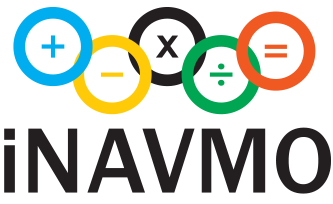
10th Annual iNAVMO & iMMO Olympiad
Well done you solved the question in 50 mins. Our Students can solve this question in 3 Secs. Join Our Workshop and learn more.
Online Registration for iNAVMO 2022-23 have started
Vedic Mathematics is a system of mathematics which was discovered by Indian mathematician Jagadguru Shri Bharathi Krishna Tirthaji in the period between A.D. 1911 and 1918. Vedic Mathematics is a collection of Techniques/Sutras to solve mathematical arithmetic in an easy and faster way.Vedic maths is very popular among maths teachers and students who prepare for competitive exams.
It consists of 16 Sutras (Formulae) and 13 sub-sutras (Sub Formulae) which can be used for problems involved in arithmetic, algebra, geometry, calculus.
Now you must be thinking, what is the meaning of sutra. A sutra is a name of a technique for solving a particular type of sum.
| SN | Sutras | Translation | |
| 1 | Ekadhikena Purvena | By one more than the previous | Very useful in finding the product of numbers, if the sum of unit digits of the two numbers totals to 10. |
| 2 | Nikhilam Navatashcaramam Dashatah | All from 9 and last from 10 | This sutra is very commonly used in the subtraction of a number from the powers of 10. |
| 3 | Urdhva-tribhagyam | Vertically and crosswise | This is used for multiplications and the formula is : ab x cd = (ac) (ad + bc ) (bd) |
| 4 | Paravartya Yojayet | Transpose and adjust | This is used to solve division problems when the divisor is a little greater than the nearest power of 10. |
| 5 | Shunyam Saamyasamuccaye | When the sum is the same. That sum is zero | This is used to solve equations in the form of ax + b = cx +d (x+a)(x+b) =(x+c)(x+d) |
| 6 | Anurupye Shunyamanat | If one is in ratio the other is equal to zero | This sutra is used in solving simultaneous simple equations in which one of the unknown terms are in the same ratio to each other as the independent terms are in ratio to each other. |
| 7 | Sankalana-vyavakalanabhyam | By addition and subtraction | It can be applied in solving a special type of simultaneous equations where the x - coefficients and the y - coefficients are found interchanged. |
| 8 | Puranapuranabhyam | By the completion or non-completion | This can be used to solve addition problems when the unit digits of the numbers add up to 10 |
| 9 | Chalana Kalanabyham | Difference and similarities | It is used to find the roots of a quadratic and to factorising expressions of 3rd, 4th, and 5th degree. |
| 10 | Yaavadunam | By Deficiency | This is used to find squares of numbers that are close to the powers of base 10. |
| 11 | Vyashtisamanstih | Part and whole | This helps in the factorization of quadratic equations. |
| 12 | Shesanyankena Charamena | Reminders by the last digit | This sutra gives you the process of converting fractions to decimals. |
| 13 | Sopaantyadvayamantyam | The ultimate and twice the penultimate. | This Sutra is used to find solution of equations in the following form: 1/ ab + 1/ac = 1/ad + 1/bc where a, b, c and d are in arithmetic progression, |
| 14 | Ekanyunena Purvena | By one less than the previous. | The product of two number can be calculated using this sutra when the multiplier consists of only 9 |
| 15 | Gunita Samuchaya | The product of the sum is equal to the sum of the product | This sutra is useful for the factorization of quadratic expressions. |
| 16 | Gunakasamuchya | The factor of the sum is equal to the sum of the factors | This sutra holds good for a perfect number. |


